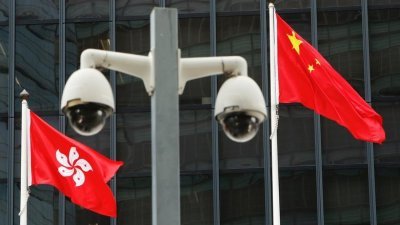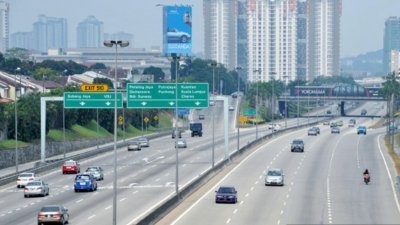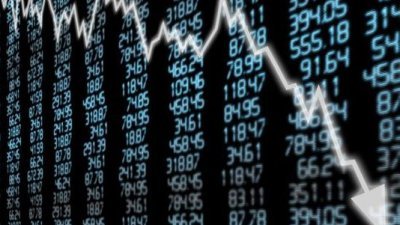在之前的一篇文章中,我提出了疑问,来届大选第一次投票的年轻选民,会否带来重大影响。
年轻选民和年长选民,现在有一个面向青年的政党,大马民主联合阵线(MUDA)的选择。但是MUDA在影响国家的关键课题上立场是什么?
查看该党章程可提供以下答案:
MUDA希望通过推广创新的政治规范来打破现状,以确保国家治理建立在讲求效率和诚信基础之上。
MUDA的5大支柱是:经济发展、就业、教育与健康、卓越治理和环境可持续性
MUDA旨在成为所有马来西亚人的政党。
MUDA维护马来西亚宪法和国家原则,以确保推进当年建国领袖们的愿景。
我早前就强调,为了实现“未来的稳定”——MUDA的座右铭——其有必要回溯到宪法制定以及所有利益相关者所同意的内容。令人鼓舞的是,这个年轻政党在其章程中也承诺追随建国领袖们的愿景。
决定大选结果因素
但决定选举结果的不是宪法如何解释或实施。反之,民生课题决定胜负。基于上,MUDA必须在这方面有所表态以赢得选票。
在我看来,当下的国家和经济状况,为MUDA要“改变现有政治现状”的雄心,提供了良好的时机。
绝大多数年长的马来西亚人——即使是30多岁的人——都知道马来西亚在大多数领域——政治、社会、经济、教育,甚至文化领域,都在一一倒退。
这种判断不仅来自有政治偏见的评论员、反对党的支持者或只想批评的普通人。对于面对著国内两大“主权至上”极端主义力量和国阵未能有效建立起一个强大、繁荣和有韧性的国度下,几乎所有人都会有此认同。
政治领导危机对马来西亚下层和中产阶级的影响最为明显,尤其这一群穷于应付日常生活压力的阶层。
国家银行、世界银行和其他方面的数据显示,至少在过去20年里,我国的收入增长缓慢,反之负债累累。结果,许多马来西亚家庭的可支配收入日益减少,储蓄不足于应付未来退休的生活。
以下两个生活基本需求价格飙升指标,足以说明了马来西亚人正面对著的经济和金融困境:
汽油价格:1990年时RON95,每升 90仙- 1.00令吉;今天RON95 每升2.05令吉,RON97每升3.81令吉
90%的马来西亚城市居民必须依靠汽车或摩哆作为交通工具。他们的孩子须乘坐私立校车或步行上学。高昂的汽油价格意味著所有生产和运输的能源成本更高!
房产价格:
2004年 巴生谷每平方尺价格240令吉
2021年 巴生谷每平方尺价格550─1000令吉
不仅在巴生谷,全国其他城市地区的房地产价格都在趋上,这意味著基本上许多中产阶级家庭一辈子都买不起800平方尺的公寓单位。
年轻人前景黯淡
对于底层40%的人口,据估计,仅食品、交通和住房开销就占家庭支出的3/4。这些家庭面对的问题不在于如何减少奢侈品消费或电费或交通费。
基于所有东西都涨价了,减少食量日益普遍。这是许多马来西亚中产阶级在没有社会安全网情况下,陷入贫困时不得不面对的选择。
马来西亚中下层阶级面临的经济危机是,政府不仅未能解决的危机,其还试图通过操纵统计数据来掩盖危机。经过联合国和世界银行等多方面的批评,马来西亚终于在2020年7月调整了国家贫困线。但即使经过此次的最新修订,我国赤贫家庭的官方数据只有约8%!只有少数人会相信这个统计数据的准确性。
就生计问题而言,年轻一代在不久的将来可以期待什么?
不幸的是,难有所期待。
首先,我们将看到我国受到通货膨胀的严重冲击。这趋势是全球性的,因此无法避免。在美国,美劳工统计局公布,1月份消费者物价指数同比上涨7.5%。英国紧随其后,去年底物价上涨了5.4%。在欧元区的19个国家,1月份通膨达到5.1%,这是自1997年有记录以来的最高水平。
所有这些数据都是在乌克兰战争爆发之前的。因此,最新的通胀数据对所有国家而言,更会是一场噩梦。一些经济学家预测,能源价格和生产成本的高涨将全面提高产品和消费品价格,甚至会比新冠疫情期间的情况还要糟糕。
但这并非是年轻一代所有的坏消息。由于经济管理不善,我们的青年失业率不断上升。尤其令人担忧的是,这趋势不仅发生于就业市场的新人和年轻人身上,也进一步扩展到那些具有高学历和其他拥有中等或低技能的人群。
对于年轻一代来说,这种经济前景每况愈下的情况,应该是选民在决定投票给哪个政党时最重要的考虑因素之一。
问题是MUDA能否在第15届全国大选中趁势而为。
林德宜《MUDA和年轻一代能否在大选有所作为》原文:Can Muda and The Young Generation Make a Difference in GE15
In an earlier article I asked whether the participation of young voters voting for the first time can make a difference.
Young - as well as old - voters now have a youth oriented party, MUDA, to consider. But what is the party’s stand on the key issues that affect the nation?
Checking out its charter provides the following answer
●MUDA wants to disrupt the status quo by promoting a political norm that is new and innovative to ensure national governance that is built on efficiency and integrity.
●MUDA’s 5 pillars are:
Economic advancement
Employment
Education & Health
Excellence in Governance
Environmental Sustainability
●MUDA aims to be a party for all Malaysians.
●MUDA will uphold the Constitution of Malaysia and Rukun Negara to ensure the advancement of the vision of our nation's founders.
I had earlier emphasised that for future stability to happen - this is MUDA’s motto - it is necessary to go back to the Constitution and what was agreed upon by ALL the country’s stake players. It is encouraging to see that this party of the young has included a promise to stand by the vision of our nation’s founders in its charter.
What Will Decide the Elections
But what will decide the outcome in elections is not about how the constitution is interpreted or implemented.
It is about bread and butter issues. And it is here that MUDA has to make its pitch and win votes.
In my opinion there is fertile ground relating just to the state of the nation and economy for Muda to “disrupt the political status quo”.
The great majority of older Malaysians - those even in their 30s - know that Malaysia has gone backwards in most sectors - political, social, economic, educational and even cultural.
This judgement does not come just from politically biased commentators, supporters of opposition political parties or ordinary people who simply want to criticise.
They come from almost everyone that is trying to cope with the twin negative forces of “ketuanan” extremism and the failure of Barisan to build a strong, prosperous and resilient country.
Nowhere is the crisis of political leadership more evident than its impact on the lower and middle class Malaysians who are desperately trying to keep their head above the water in their daily lives.
Data from Bank Negara, the World Bank and other authorities reveal that for the past 20 years at least we have had slow income growth and greater indebtedness. The result - many Malaysian households are having less disposable income and inadequate financial savings for their future.
Just two indicators of the soaring cost of living needs to be provided to illustrate the economic and financial headaches that ordinary Malaysians are experiencing
PETROL
1990 Ron 95 90 sens- 1.00 ringgit
Today Ron 95 RM 2.05
Ron 97 RM 3.81
90% of urban Malaysians have to depend on their cars or motorcycles for transport. And their kids have to take the private school bus or walk to school. Also higher petrol prices means higher energy prices in everything that is produced and transported!
PROPERTY
2004 Klang Valley average price per sq foot RM240
2021 Klang Valley average price per sq foot RM550- 1000
What has happened to property prices not only in Klang Valley but also in other urban areas throughout the country means that basically many middle class households are unable to afford a 800 sq foot condominium unit in their lifetime,
Unmanageable Financial Burden
For the bottom 40% of the population, it has been estimated that food, transport and housing alone take up as much as three quarters of household expenditure. The problem for households is not about how to cut back on the luxuries or the electricity or transport bill.
It is increasingly about how to eat less since everything has gone up in price. This is an option which many middle class Malaysians are having to face as they fall into poverty with no safety net available.
The economic crisis facing lower and middle class Malaysians is one which the government has not only failed to address. It has also tried to hide the crisis by statistical manipulation. After criticism by many quarters including the United Nations and World Bank, Malaysia finally adjusted the national poverty in July 2020. But even after this and a more recent revision, absolute poverty in the country is officially now estimated at about 8% of households! Few in the country will believe this statistic is true.
Young Malaysians Bleak Future
What can the younger generation look forward to for the immediate future in terms of bread and butter issues?
Unfortunately not very much.
For a start, we will see our country hit very hard by inflation. The trend is global so there’s no escape from it. In the United States, the Bureau of Labour Statistics announced that the consumer price index rose year on year by 7.5% in January. Britain was not far behind, with prices rising by 5.4% at the end of last year. In the eurozone of 19 countries it hit 5.1% in January which was the highest since records began in 1997. All these figures were recorded prior to the outbreak of the Ukraine war. Since then, the latest inflation figures will bring nightmares to all countries. Some economists are predicting that the blow to energy prices and production costs will raise production and consumer prices across the board even worse than what happened during the outbreak of Covid.
But this is not all the bad news that the young generation can expect. Because of mismanagement of the economy, we have had rising unemployment among youth. Especially worrying is that this rising rate is not just for new and very young entrants to the employment market. It is also a growing phenomenon for those with high paper qualifications and others with middle or low skills!
This scenario of economic prospects going from bad to worse for the young generation should be one of the most important considerations for voters when determining which party to cast their votes for.
The question is whether MUDA can capitalise on this in GE15.
要看最快最熱資訊,請來Follow我們 《東方日報》WhatsApp Channel.


















